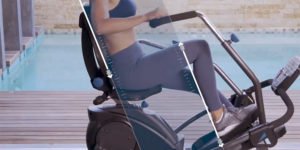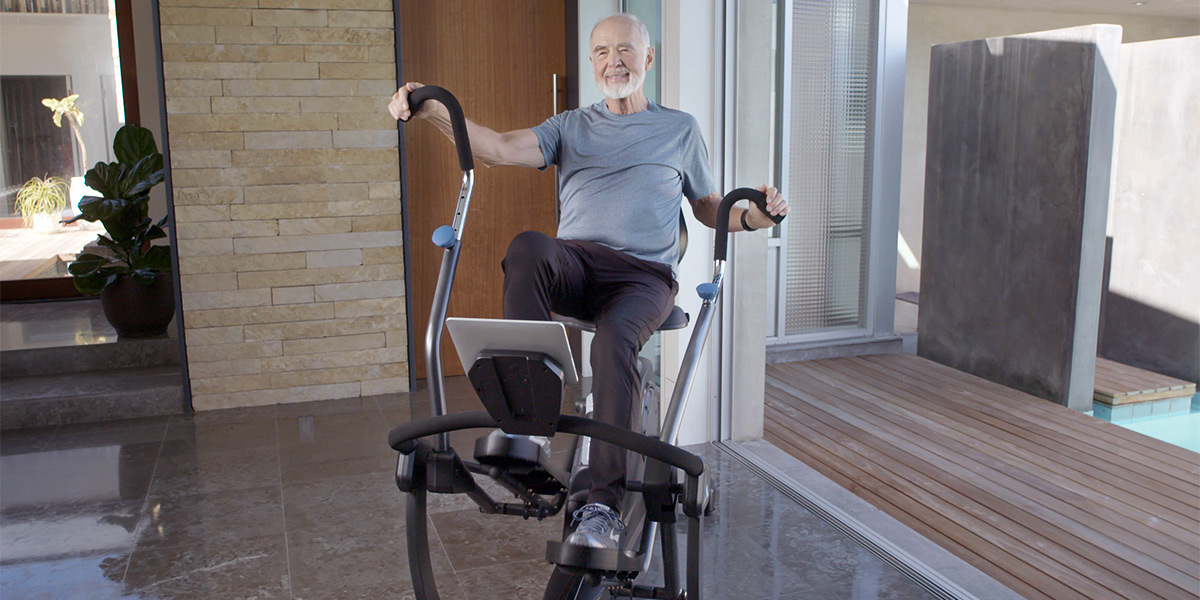During stroke recovery, physical therapy and exercise will become an everyday priority. If you have been cleared by your doctor to exercise, it’s a great time to find easy ways to stay healthy and active from your own home. A recumbent bike is one way to restore post-stroke mobility, cognitive function, and general health. In this article, we explain the features that make a recumbent bike an excellent solution for stroke rehab patients. We also offer tips on what to look for when shopping for your own recumbent bike.
What is a Recumbent Bike?
Recumbent bikes provide more accessible exercise for recovery patients than regular stationary bikes. The reclined seated position supports the back and provides better body alignment. This relaxed design helps build flexibility and strength in the legs without the impact of full weight-bearing exercise. It also requires less balance and coordination to get the same benefits and calorie burn.
Yet, even recumbent bikes can still add unwanted impact on the knees and joints. This is why recumbent “cross trainers” like the NuStep and Physiostep have become popular in Physical Therapy clinics. They offer the same benefits, but with a more natural stepping motion that protects the joints.
Do Physical Therapists Recommend Recumbent Bikes for Stroke Rehab?
Many Physical Therapists recommend recumbent bikes to post-stroke patients. In fact, a study in the Journal of Physical Therapy Science has shown that stationary cycling improves balance and gait abilities in chronic stroke patients. They found the reciprocal movement stimulates the central nervous system and cerebral cortex. This increased activity leads to improved coordination, motor learning, and balance.
What is the Best Recumbent Exercise Bike for Home Use?
If you’re looking for a machine that will protect your joints and restore balance and mobility, you may want to consider the Teeter FreeStep. It delivers commercial-quality technology, similar to that you would find at your PT clinic, but at an affordable price for in-home use.

Easy on the Joints
The FreeStep offers a natural stepping motion that is easier on the ankles, knees, and hips than on other recumbent bikes. Most recumbent bikes use a cyclical motion that can trigger knee shear due to the repetitive flexion of the joint. The unique stepping motion of the FreeStep lets you strengthen your joints without instability in the knees or hips.
Combines Aerobic Exercise & Muscle Strengthening
Aerobic exercise on its own is an effective practice for stroke recovery. But, The American Heart Association reports that combining aerobic exercise with strength training yields the best results for improved cognitive function. This is where the FreeStep excels; it provides cardio exercise that burns calories fast and strengthens muscles in your upper and lower body.
Less Fatigue, More Benefits
The FreeStep provides a workout that distributes exertion throughout the body. This means you will be less fatigued and be able to exercise for longer periods of time. Additionally, the FreeStep moves the ankles, knees, hips, arms, and shoulders for motion training in the entire body.
The Most Affordable Option
The FreeStep fills a serious void for those who want a recumbent machine for their home but can’t afford the more expensive options on the market. Teeter licensed commercial technology to make therapeutic exercise affordable for in-home use, offering the same zero-impact technology as other machines you would find in therapy clinics for a fraction of the cost!
Learn how Teeter customers have gained back strength, mobility, and independence with their FreeStep!
“I recently suffered a mini-stroke at age 82. After physical therapy, I was looking for an exerciser to continue strengthening my legs and found the TEETER in the internet. Was very impressed with the pictures, in-depth description, video and good reviews. Have been using mine for a couple of weeks now and especially like being able to adjust the tension to make my workout as easy or as strenuous as I want. Would recommend it to any age person.”
“One stroke and a balky knee mean I needed something kind to my knees to keep up my leg strength. This cross trainer allows me to do that.”
“I purchased this machine in hopes that my wife who is a hemiplegic would be able to use it. She can not walk more than a few steps with assistance, this machine makes it possible for her to get movement in her legs.”
“As a person who is hemiplegic due to stroke and short (5ft) the seat is low enough to get up on and use comfortably. Bought another brand and returned immediately. The FreeStep is far superior in quality.”
The Most Effective Low-Impact Workout
Unlike other recumbent options, the Teeter FreeStep™ provides an effective full body workout by combining the upper and lower body into one impact-free motion that is easier on the joints than typical cardio machines - so you can get an amazing workout, without the pain.
